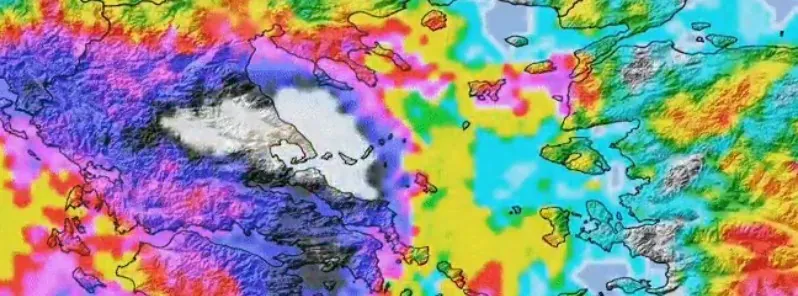Storm Daniel’s extreme rainfall in Central Greece marked as a 1-in-200+ year event

Extreme rainfall from Storm Daniel led to catastrophic flooding in Central Greece earlier this month, described as a 1-in-200+ year event. The storm then moved on to cause massive flooding in Libya, resulting in over 11 000 fatalities.
Daniel impacted Central Greece on September 4 and 5, 2023 before making its way to Africa. The event has been described as highly unusual, with World Weather Attribution classifying it as a 1-in-200+ year event for Greece.
The most significant rainfall was recorded at Makrinitsa, Thessaly, where the total reached a staggering 1 235 mm (49 inches) in a 4-day span. Of this total, 757 mm (30 inches) fell in a single day. These are exceptional figures that highlight the unprecedented scale of the event.
Extreme rainfall associated with Storm Daniel that wreaked havoc across Central Greece earlier this month has been estimated by @WWAttribution as a 1-in-200+ year event. The highest rainfall total observed was at Makrinitsa, Thessaly with a staggering 49 inches (1235 mm) in 4… pic.twitter.com/bSd5RnjDgH
— Nahel Belgherze (@WxNB_) September 20, 2023
The storm system moved on toward Africa, slowing down and lingering off the Libyan coast on September 9. Satellite data confirmed Marquesa’s landfall just north of Benghazi around 01:30 UTC on September 10, with maximum sustained winds of 95 km/h (59 mph) and a central pressure of 995 hPa.
The aftermath was catastrophic. Northeastern Libya, a region that typically sees an average annual rainfall of 25 mm (1 inch), was inundated with up to 406 mm (16 inches) of rain in 24 hours to September 10. During the same period, 240 mm (9.4 inches) of rain fell in Marawah in the District of Jabal al Akhdar, and 170 mm (6.7 inches) fell in Al Abraq in the Derna District. According to figures from the World Meteorological Organization (WMO), the city of Derna recorded 73 mm (2.9 inches) of rain in 24 hours to September 11.
To put this in perspective, Libya receives an average annual rainfall of about 30 mm (1.18 inches). The wettest months are December, January and February with 13.26 mm (0.5 inches), followed by September, October and November with 8.28 mm (0.3 inches), March, April and May with 7.48 mm (0.29 inches) and June, July and August with 1.83 mm (0.07 inches).
Featured image credit: GPM/IMERG, Giannis Dravilas

Commenting rules and guidelines
We value the thoughts and opinions of our readers and welcome healthy discussions on our website. In order to maintain a respectful and positive community, we ask that all commenters follow these rules.